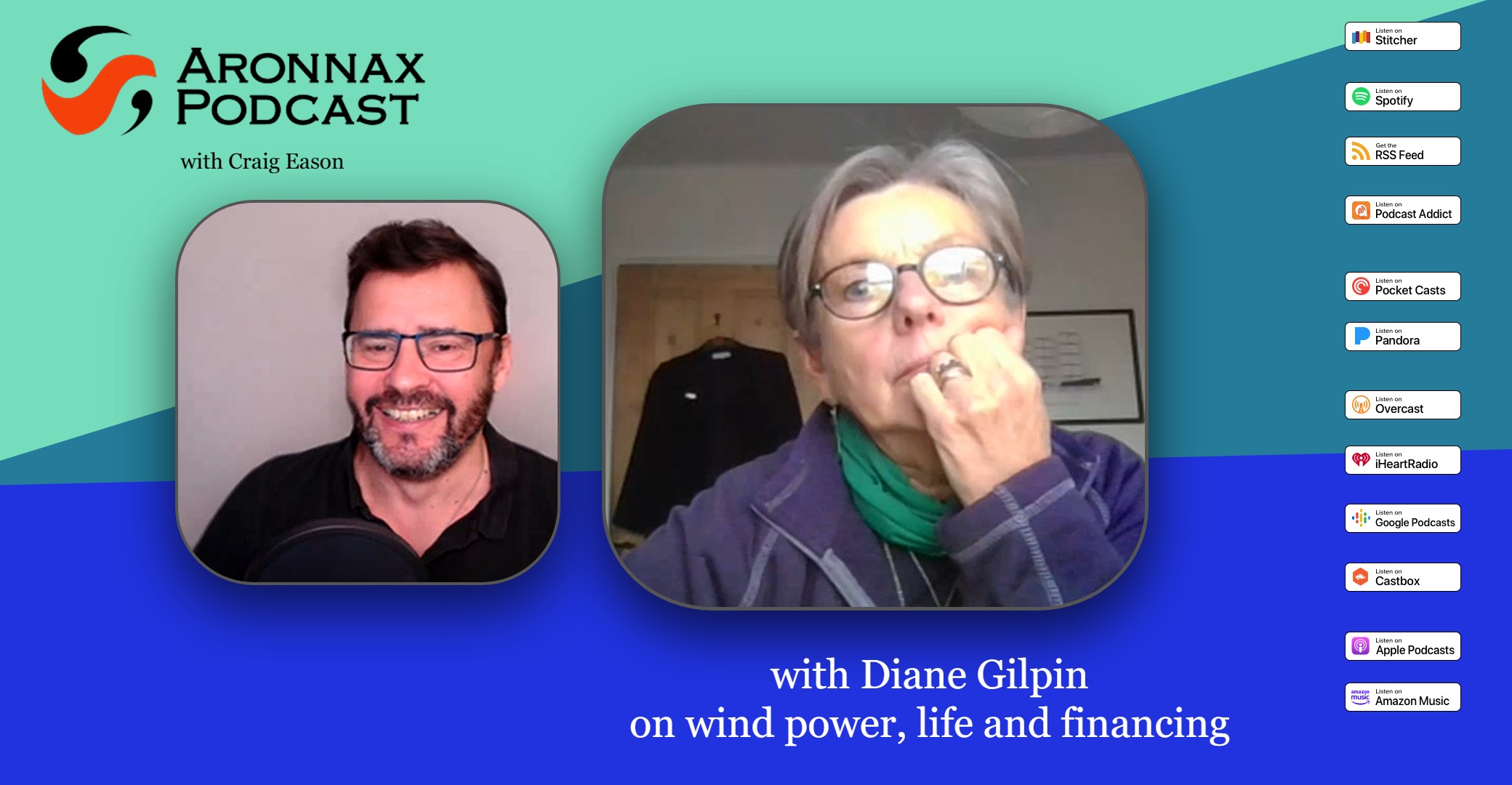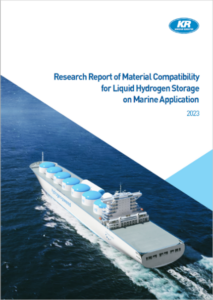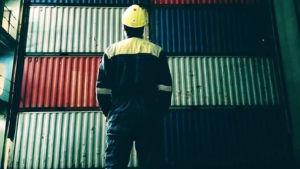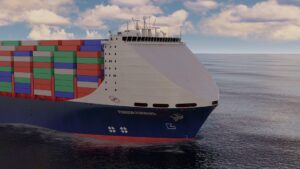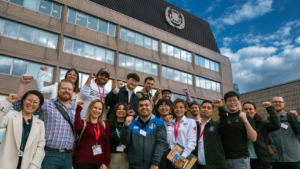Hello and welcome to a new episode of the Aronnax podcast the show that focuses on the transformation of the maritime and ocean space.
In this episode of the Aronnax Podcast Craig Eason caught up with Diane Gilpin one of shipping’s greatest champions for a resurgence of wind-powered solutions as the industry seeks energy efficiencies and decarbonisation.
In a wide ranging discussion Craig and Diane talked about her career, and what she has learned about innovation and how hard it is to seek financing (an issue for any sustainability focused green technology being pioneered by a startup or SME).
Craig gets her thoughts on COP 26 in Glasgow where shipping folk turned up in greater numbers than they have ever done at any previous UNFCCC meeting and what she thinks needs to happen in the future.
Transcript coming soon
Episode transcript
Craig Eason 00:07
Hello, and welcome to the Aronnax podcast. My name is Craig Eason. I’m the owner and editorial director of Fathom World. And I am your regular host on this podcast and with me today as a very, very, very special guest is Diane Gilpin, who is one of the most well known wind experts within the maritime sector. I’ve known Diane Gilpin for a number of years. Hello
Diane Gilpin 00:34
Hello Craig, I’m really well, thank you. Thank you for inviting me.
Craig Eason 00:37
You have just come back from COP 26. You’ve been up in Glasgow. But while you were there, you won an award, you were given a recognition of outstanding contribution to the industry to the wind propulsion industry. While you’re up in corporate 26. How does it feel to be one of the most widel.. wisely… widely recognized names within the industry?
Diane Gilpin 01:03
Wild and wide? Yeah, it’s real. It’s a real honor. I mean, when when we started out on this journey, wind, I think there was me and Gavin. All right, who’s the Secretary General and a few other organizations, maybe five, Thomas Riiski from Norsepower was there. But it was a very nascent emerging opportunity in the global maritime space. So I don’t know what is it seven, eight years on, one doesn’t want to dwell on the number of years, but there is now a membership about 150. I think so. So that’s an honor to have been recognized as being a nuisance for that long, and talking about wind to anybody who would pass me the time of day. And it’s just been great. And it was a real honor. There’s lots of fantastic opportunities for other companies now emerging in wind. So it’s fletners and wingsails and all sorts of technologies, it’s a really, really vibrant sector and to be recognized in that has been just such an honor, because ther’re friends and you know, peers. So it’s been great.
Craig Eason 02:19
But I have seen myself over the years and a different in how the wind propulsion sector has become more recognized and accepted. I interviewed one of the leading maritime names at leading classification society a few years ago who said no wind is never really going to take off. It’s just not going to fit into the shipping industry. And yet here we see it now with a lot of industry, a lot of other industry actors, not just within the shipping industry, but charterers and other industry players, recognizing the value of wind, we saw how Vale have taken to putting a wind systems on their ships, we see how charterers are really sort of looking at the wind sector, both as a wind assist, and also now we see a number of propulsion systems, where’s the total encapsulating of the of the whole supply chain? And that’s where I think there is a distinction here between the two, isn’t there? One is the wind assist as a retrofittable solution that goes on to an existing ship, and can actually help it with its decarbonisation goals. And the other one, which is something that you’ve been more involved in, I see from the years that I’ve known you, is this looking at a sailing vessel, a modern sailing vessel, let’s not hark back to the olden days of sail, but a very modern sailing vessel as part of a supply chain. And I know within your Smart Green Shipping that you’ve got today, and even when in your before life at B9, if I got that right, you were looking at the total solution. So how have you seen those to sort of evolve over the last couple of years?
Diane Gilpin 04:08
So I think so yes, we’re absolutely we’ve been, we’ve been seeing the opportunity for a holistic integrated design. So if you use wind, and so you’ve got the above the water aerodynamic benefits. If you combine that with optimized hull design, then you can get much more power from the wind systems. But that’s a big ask for the industry to go from not no wind to Let’s Do This brand new build. So what we’ve seen is the market becoming more interested in retrofit solutions, and that’s really helpful in the challenge that the climate challenge of reducing emissions in the short term because we can retrofit relatively quickly and start to drive emissions out of the existing fleet. And so, you know, the whole decarbonisation challenge is really interesting because, you know, we’re not going to just chuck the existing fleet in the bin and start again. So there has to be a transitionary period. So I think the way to go is retrofit, which is what we’re working on now. And that provides the learning and the data for then feeding into new build systems, which, as the market becomes more familiar with technology can, can be more open to, to, you know, bigger, new build costs. So I think that, you know, it’s a transition. And we can be transformational with that transition. But we need to start with what we’ve got, we can’t start with where we want to be, we’ve got to start with where we actually are. And a study from, the UK Department for Transport, identified 40,000 ships that could be retrofitted. So, you know, it’s a big enough market for us all to play in. And, and there’s plenty of different solutions that are being developed, but we need to be bringing more of those to markets so that we can give confidence to the sector that you know, these things work. It’s not just a pretty picture, and a bunch of academics doing some maths, you know. This is how does the crew work? It those sorts of things
Craig Eason 06:23
There are a lot of questions. I mean, I I’ve seen a number of companies that have began to emerge, say seven or eight years ago, with retrofittable solutions that have struggled financially. And, you know, really, really struggled to to make that mark to go from an idea to a concept to doing the trials, to actually then sort of ramping up and commercialization. I’m gonna come back to the finance angle in a moment. But do you feel that there’s much more of an appetite, then for the kind of solutions that we saw 10 years ago, but largely were ignored then but perhaps not going to be ignored now?
Diane Gilpin 07:00
Absolutely. I think that the conversation. I mean, you know, talk, we’re just back from COP, but the conversation is much more around how do we decarbonize rapidly. And we have opportunities for alternative fuels being developed in the future. And that’s fantastic. And that must happen. But the IPCC, and you know, the scientists say we’ve got to start reducing emissions from every sector in the next eight years, by between a third and a half. And the only way that we can do that is through retrofitting wind, and looking at other energy efficiency solutions, like route optimization and hull cleaning. And then we can start to make a significant difference, in-roads. And I think one of the challenges that we had in the past is that people don’t really know where to put wind. So it’s not a fuel, it’s definitely a fuel because you can’t, you can’t bunker it. So it’s energy efficiency, but actually, it’s more than energy efficiency, because it provides direct thrust. So you know, when we think about, say, hydrogen, making hydrogen. You make it from offshore wind, and then you transport it back into land, as a fuel storage system, in this case, hydrogen, and then you transport it about a bit more, and then you put it in a ship, and it goes back to sea. And it probably sails past the wind turbine where it was originally made. And my argument is, well, let’s just cut out the middleman where we can and use the energy, the power source for direct thrust at the point of service, because that is a much more efficient use of energy. So, you lose a lot of the energy in that transit. So if you’re making hydrogen from offshore wind, thats transported, you are only left with that 10% of the energy that was started with. We can use it 100% in the maritime sector, no other sector has that opportunity. So its power and it reduces overall emission for overall demand for fuel and happens to make a big dent in your emissions.
Craig Eason 09:10
I think also, there’s this visual aspect of this technology, which in the shipping industry, given the the way it gets represented in the mainstream news, not necessarily in in industry news sites. But in the mainstream news and the general image of the shipping industry is it’s not necessarily one of it’s not necessarily the cleanest of images, but the site of these vessels with these these rotor sails, the wing sails or other types of kinds of systems on board is a very, very visual representation of change within this industry, isn’t it is a very good positive story.
Diane Gilpin 09:48
I think so and I think there’s, there’s there’s really good stuff. So first of all, I would say that shipping has a much, much better story to tell them it does. You know, and we we as Consumers learned about the importance of global supply chains during COVID. And I think we underline the importance of shipping. But I think there’s more to it that I think I think we really have an opportunity to tell a great story about what shipping does the globe, the global world, not just trade, but, you know, sharing culture and ideas, and all sorts of things like that. So I think that shipping has a much better story to tell. And I think we can tell a great story about deploying renewable energy on ships. And one of the things that makes us optimistic is we get a lot of interest from outside of the shipping industry in what we’re doing. And I think that that has helped us enormously in getting as far as we’ve got, which is not far enough, we’ll come talk about that in a minute, the funding bit, but, you know, there is, shipping has a place in people’s hearts, you know, the world in which we live was built on,
Craig Eason 11:05
there’s always been that element of romanticism about the ship, sailing over the horizon and coming back safely with the cargo. Yeah,
Diane Gilpin 11:15
and I think there’s really interesting metaphor there for what we’re facing in terms of climate, you know, we don’t know quite what the future holds. But we’ve got to face it, we’ve got to go over the horizon, not really knowing what’s going to happen. But if you’ve got a great crew, if you’ve got a great ship, then you are in a really good place, and metaphorically, are used that, you know, when we went when, when the original explorers set sail, they didn’t know, they don’t even know if the world was round, to fall off the age. So, you know, we need that sort of courage as we go forward into addressing the climate emergency. And I think shipping is a great metaphor for that, because of the courage and the, and the romanticism that shipping has kind of reflected in in all of us, we need good stories about the future, not the gloom, and doom ones around, you know, we’re gonna be awful.
Craig Eason 12:11
You can think of the thing that I think that those stories, I was not in Glasgow, I wasn’t up at COP 26 I wouldn’t have been able to afford even the most basic hotel rooms if I’d met and decided to go there at the last minute going by when I heard but I got the impression there was a lot more shipping and maritime stories, there was a lot more representative of the shipping and maritime industries up in Glasgow than we’ve ever seen a pre any of the previous cops and let’s not forget the number 26 on cop 26. All right, should have happened last year that we’ve had 27 years of cops evidently, and this is the biggest one to represent, to see the maritime industry represented.
Diane Gilpin 12:53
Absolutely. I mean, I I did an event at COP 23 Paris, with the International Chamber of shipping, where we talked about available technology and so on. And I think that was the only shipping event that happened in Paris. in Glasgow, i There were multiple events, the ICS did a long two day event with shipowners, but maritime UK were there. And they did events over the fortnight looking at different technologies, like Glasgow College. Marlin, the Marine engineers on the Clyde, they did a fortnight of maritime related events in a facility that they built. So shipping with their global maritime forum getting to zero commission, commission on religion coalition coalition. Yes, don’t don’t don’t recall that. Yes, so they were there. It was, it was it was kind of there was like a big shipping enclave. And it was really encouraging because on the day after the formal transport day, we hosted an event at Malin with Bureau Veritas, where we tried to bring together all of the disparate conversations that had been going on across the shipping piece, and bring it into the context of what we learned at COP 26. About You know, where transport was going. And we had a really fabulous session, we’ll be launching the report from that in the next few days, where people were invited to work together to figure out what’s next. So, you know, there’s been this great burst of activity across the maritime space. And we now know fully embrace the fact that this is a huge challenge. What do we do about what we do tomorrow? You know, we’re kind of we’re all there. We don’t want to go back to our desk to do exactly the same thing. So what are we going to do? So that was really fascinating. And, yeah, there was some, there was some ag conversations between different types of people across the let’s call it ecosystem. But there was an awful lot of collaboration was a lot awful lot of good understanding that this is a crisis and we need to work together.
Craig Eason 15:09
You mentioned that mentioned it as a sort of maritime and shipping enclave while you’re there, but But what about that sort of engagement with the non maritime non shipping routes or entities while you’re up at comp 20s, to cop 26, because a lot of the time we hear about how the message of shipping and the importance of shipping is being missed, or what the real story is new, you said a minute ago about how it’s all of that real positive story of shipping needs to get out there. How about getting that message about shipping, outside of the shipping while you’re up in Glasgow?
Diane Gilpin 15:43
So I’m not gonna speak for anyone else, I went to other events. And so there were more about innovation, because obviously, that’s the sort of where we have a Venn diagram when shipping, but we’re also in innovation. So there’s quite a lot of innovation activity that I was involved in. And so I was crossing over into different industries and learning from different industries, but stuff that we could bring into shipping. I sense and I might not be right. And I’d like to be wrong. But shipping mostly talks to itself at COP 26. But there was a wider, widen group of people, they’re talking to themselves, as it were, if you know what I mean. So there was a wider reach across the shipping ecosystem. So there were marine engineers, and the worst cargo owners and the worst ship owners, and the were technology developers all in the same room. So I think that’s an advance. But I still think we need to get better at talking to other sectors.
Craig Eason 16:54
You’ve, as I said earlier, you before your engagement, the current engagement, you’ve got you were at your running this company B nine, beautifully named B nine, letter B. Number nine, meaning obviously the word How did you get even into that? That was I guess, was one of your earlier forays into the stepping stone into the maritime sector in some way? Was it? How did you go from your because previously, I know that you’ve been involved in offshore racing, but also in Formula One racing at some point, and I’ve no idea what you did then. But how did you go from Formula One and racing to the maritime sector? And how did that sort of environmental picture develop as you went through it?
Diane Gilpin 17:42
I don’t know there might have been a guilt thing around Formula One by the time I got to renewables. But so so this is a common spread is innovation. I started out my career working cellular telephones before cellular telephones were invented. So I worked for the UK firm that was then called sell net. And it we just built it, we built a network. And we sold, we arranged ways of selling phones. And what’s interesting about that two things, I think, what a lot of interesting tales about how we thought the name up in a pub over a gin, rather than spending a branding agency, which then the the new owners spent 10 million on branding, we did it over a couple of pints. But you know, the fact that when we first went to market and said, Hey, mobile phones, everyone went now, what would you want a mobile phone for? But what am I desk, and now we can’t move to the things. The second thing that I think was really interesting was we hired really smart consultants to give us the best estimate of market penetration for this newfangled technology. And they came up with something like 30%. So you know, their their vision was you could only get 30% of the market to use these phones. Again, wildly wrong. So I think the thing that we could take away from that is when you start innovation, you have no idea when it’s where it’s going to go. And so whatever you think so your predictions are always made in the world in which you live, and not the world in which emerges in adjacent technologies at the time. So I think that’s really interesting. So I was working in Selma. And then I got headhunted to work in f1. And I worked for Ford, and the benefit formula team. And Ford engine was in the event and Formula team and one of my jobs was in engineering, the technology transfer from the race car to the road car. So that sounds very grand, but basically, it was talking to people like, Oh, could you use that thing in your Ford Fiesta? I mean, you know, readapt that, can we like Wait This can we learn from that? And also some of the slides logical things really about the way that the Formula One team operated, which was relentless innovation, at speed, in order to try and beat the OPPO the opposition on the next fortnight, so that you the appetite
Craig Eason 20:15
did not give you the appetite, that meant that failure was an option.
Diane Gilpin 20:21
Um, it gave me the, what it gave me was that, you know, you can move, you can move fast if you need to. And you need a great, great team. And I was very fortunate to be part of the fabulous team. And I think fail fast is the important thing, trying to drag a bit of front wing and play at home on the on the on the fly on Sunday night. Get it to the factory, tweak it, take it back the following Thursday, and try that and see whether you can get a you know, a fraction of a second off your lap time. And it was it was about a complete focus. Everybody was focused on winning. And, you know, even that was only winning the people that you didn’t beat last week, because we were never up with the with what was then Williams and McLaren who were at the front of the Ferraris. But you know, it was fabulous, great. But one of the sponsors that I worked for a company called logical wanted to do yacht racing. And I thought, well, pretty much the same, isn’t it? You know, it’s, yeah, go go do not racing. Quite different, because you don’t actually know when a yacht is going to come home from the race. So that’s an interesting thing. But at the same time, we started to develop digital systems to keep in touch with race yachts, when they were far over the horizon, you know, talking about the horizon earlier. And so that was really fascinating. And as part of that, in fact, the managing director, the owner of B nine, had been involved in making a Formula One digital simulated driving platform. And so we had kind of crossed but we got to know each other a bit better when I was working in yacht racing. And and then we thought, well, how hard could it be to tap transfer the technology from yacht racing into Merchant Marine, he was a marine engineer and he’d been working on oil and gas rigs David surplus, and and he started to think about you know, we’ve started to learn about climate side to think about solutions and be nine built wind turbines. So they built the first wind turbine in Ireland fortune five kilowatt hours. Now we can see, you know, beyond imagination, then that you can have 17 Mega Watt floating devices just just just never thought that knew it was good idea, but didn’t know quite how far and fast it could go in so again, over a pint you don’t need to think my whole life is directed through pups but David and I set up being on shipping to put it together and then be nine was sold to Mesa and, and we decided that you know what, we had to rebrand. So we rebranded it to Smart Green. Yeah. And not in a pub, I don’t think
Craig Eason 23:29
okay, so that is that bit was done over a cup of tea was a Smart Green shipping now, you know, evolve this idea. You’ve been working with companies like Drax, and Humphreys, your design. You’ve been doing this for quite a long time. Now. I mean, if I was to be critical with you, I’d say well, I don’t see much change. Yet. From when I first spoke to you, I interviewed you two years ago, I think to talk about what you were seeing as happening was Mark Green shipping and this relationship with Drax, which is a energy company in the UK. But it’s I think the arrangement, if I’m not mistaken, was about transporting wood chip into the UK for one of its bio energy solutions, if I remember rightly. So, I mean, so tell me a little bit about then. So what’s happened with Smart Green shipping over the last two or three years? And where do you see because and this is where we’re gonna start having this conversation now about finance, aren’t we?
Diane Gilpin 24:31
Yeah, absolutely. Absolutely. So yes, we had, we were fortunate enough to win an award from Innovate UK, which is a UK Government funding for innovation is sort of in the name, and Drax were were part of the collaboration that won that and we worked with one of the ships that was owned by alpha bolt that was moving wood pellets into the UK for the Drax power. So we were able to model a date, you know, use a digital twin of that particular ship, the Ultra Ball Tiger, model the ship working with and without wings, we were able to develop the design of the wings with some of the funding that we had. But more importantly, we were able to spend time with the owners with the crew with the port, and, and really get to grips with the practical challenges that they were concerned about. LR were part of the team. So you know, what are we gonna do about visibility when these things are in position? How do we load and discharge? What are those sorts of conversations. And so we we develop the design for 100%, renewable, retractable automated wing sails, so you don’t need to have crew involvement, they that smart, if the wind is blowing from that direction, that they will know which way to turn to harness the amount, the wind, the maximum amount of wind, if there’s a bridge coming towards them, or if there’s too much wind or not enough wind the rigs now to get out of the way. So really, really cool design. We finished that project at the end of 2019. And we started to talk to Scotland, about using marine engineers in Scotland, and basing the business up there because it’s a really good place, obviously, for clients heritage. And then we kind of had a big obstacle with COVID. Because talking to governments, whilst they were dealing with a pandemic was challenging. And talking to critical energy infrastructure, whilst they were addressing the issues around a global pandemic. Drax critical infrastructure was also problematic. So we sort of hit a bit of a roadblock because of COVID. But we have subsequently been awarded a grant from Scottish Enterprise, and Drax, and a shipowner and the institution of mechanical engineers have supported us in winning a grant from Scottish Enterprise, and we need to unlock that with private finance. And here’s the rub. Private Finance is incredibly difficult to find, not only for shipping projects, but for multiple, let’s call it green solutions. So it’s not only renewable energy, its biodiversity, it’s it’s all sorts of commercial opportunities that have been developed by what I call climate entrepreneurs, who are who are being really smart about the fact we’ve got start reducing emissions very quickly. Excuse me, and and there’s just not so we’re here. at COP, we were hearing all there’s loads of money, trillions of dollars, but there isn’t, you know, $1.6 million for a three year project, which is what we need. That’s that doesn’t exist. And so I mean, you know, or if it does, it’s incredibly hard to find. And we’ve worked with some of the best fundraisers in the business big, big banks have been trying to help us. Individual really well placed. People who know people who, you know, private offices, that sort of stuff. And it is really, really hard. No one expected it to be this hard. What we’ve discovered is it’s actually a structural problem. It’s not, it’s not us, although it’s very easy to believe that you’re a personal failure. It’s not, it’s about the technology is too early. That’s what that’s what the most common pushback, but why
Craig Eason 28:59
is why is that still a perceived issue? Well, you can you and you and I can list, you know, a good dozen vessels currently out sailing the seas with some sort of system on board for for wind assist propulsion, we can point to a lot of companies that are developing solutions, why is there this structural obstacle when it comes to looking for finance, when surely to a point, I understand that, you know, there’s still some sort of proof that needs to be done in terms of the maturity within the sector, but to a point that we can demonstrate that there are systems working that there is appetite as well, given what you were talking about earlier on about the the the way that the industry has come together about decarbonisation, so we know those the appetite, we can demonstrate the technology. So why is there this kind of systematic issue with the finance So I
Diane Gilpin 30:00
think it’s, it’s specifically about this technology. So what So what we’re seeing are the Flettner rotors, the Flettner rotors have demonstrated the technology, they have gone, you know, physical structures on real ships gone to the water. So that’s what the so so all of the actors are entirely rational. I would say that isn’t it, there’s nobody that’s being there’s no climate deniers in this conversation. It’s not, it’s not irrational. But the finance sector has rules and it can’t invest in unproven technology. And that’s logical. If you’ve got any money in a bank, you don’t want them to be, you know, threading into out on stuff that they think, oh, that’s quite a nice idea. It’s when I get that. And so the flat directors that we see on the on the on the water have got a head start, they got some funding northpower Got some funding early, earlier, and its development that enabled it to demonstrate the technology in the real world. And then once you’ve done that, it’s much easier to get the scale funding, it’s much easier to get the next scale itself. And where we’re at with the wing technology is that we’ve developed it in digital computational fluid dynamics suites. But we haven’t put metal on decks and given the market confidence, that the systems that we say will work do work. And that the fuel savings that we have have done really big maths around and not us, but University of Southampton actually stuck up in the real world. Now, if we were still in motor racing, we wouldn’t need to build a physical model, the physical structure, we just go, right. Okay, we’ll try that. We’ll try that. But we’re not in motor racing, we’re in this much more conservative world where we do need to think we do need to all adhere to the rules. So we, we need to demonstrate the technology. Now we need to demonstrate wing technology, we need to demonstrate tidal we need to demonstrate wave we need to demonstrates you know, a carbon sequestration or in soil, all sorts of technologies are in this terrible, it’s called the Valley of Death. And I prefer to call it the innovation hump because I feel like there’s a better chance of getting up and over there is going into the valley of death,
Craig Eason 32:28
valley of death to sound slightly terminal. Overcoming an obstacle,
Diane Gilpin 32:33
and I’m not gonna say so. But I think that it is a real problem. And I think at COP, actually, we did identify through some of the workshops that I was involved in that this is a problem. That is, is not to do with the technology or the or the individuals that are involved in that technology. And and what could we do about that? Well, we could create a fund, which might be, you know, that fund that the ICS is suggesting, will be suggesting mepc 77. But even if that’s ratified, it won’t getting in place till 2023 Because of all of the admin stuff that goes with it. So is there a way that we can create a fund for these sorts of technologies to be accelerated through the demonstration phase, which I think is really critical? I think that, you know, the market, the shipping industry, the ship owners that we talked to, or ship owners that moving cargo about they’re not an r&d company.
Craig Eason 33:44
No. And I’ve seen that comment from some people sort of why should the shipping industry be the one that’s being asked to fork out the money for the r&d for something that is going to be sold to them at an at a later date? But that does raise the question about where public funding comes in to sort of alleviate some of that risk, because we’ve got the EU horizon? Money. You mentioned UK funding. Previously, there is UK funding there. There are other institutions that have been known to put up money to sort of help with that r&d. But are we talking here? Mostly about public funding from open funding for more nascent r&d? Rather than that kind of proof of concept before bringing something to the market? Is it just is it also a case of where you are on that development slope?
Diane Gilpin 34:42
Yeah, so we Innovate UK funding that we that we weren’t was for feasibility that that so that’s kind of TRL technology readiness level 1234 very early stage You’ve had a good idea. You develop it in the lab, basically, which is what we’ve done. So, so it’s so this is, so public money is really helpful, but you still need to unlock it with private money, the way that the system works is you need private money to unlock it. At the feasibility stage, that’s probably within the reach of an SME is to find the to find the private money. But when you start to get into metal bashing, and putting teams of engineers on installations, you’re into millions of pounds. So what public money does is it D risks it, but it doesn’t, it still requires private money to be part of the next to unlock it. And the public money is not paid until the company has paid the invoice. So if you’ve bought a bit of metal chunk of aluminium to make your wings, that might cost you a million quid. Now, as an SME, that means we have to find a million quid to bankroll the whole project until we because we don’t get the money back. So that’s a really difficult challenge for a lot of SMEs. And so it’s, you know, the money’s there. But it’s, it’s also very difficult and expensive to manage. And so that so we’ve seen, for instance, a clean maritime demonstrator competition, which great initiative through the Department of Transport in the UK. But that project, the winners of that project, were mostly big corporations that can manage that cash flow, they’ve got the deep resources. Now, my question about that is, do you then get the most innovative people, and the most agile sorts of solutions being developed through those mechanisms? Because, you know, the people that I have been presenting with a cop to, you know, in innovation forums, the things, they’re young, smart, small companies out, you know, father and son, one particular unit drove, fantastic hydrogen delivery system developed by a guy called Steven Liu and his dad, and they just brilliant. So, so there’s kind of, you know, there’s a different mindset in some of the really innovative stuff that’s coming through. And I think, where the funding, public funding tends to go is into more establishment. And then I would argue that we need to be more innovative about how we do our funding.
Craig Eason 37:48
Have you seen any indications then that that is likely to happen? Have you seen any positive signs around that? Innovation obstacle, or rather, not so much innovation obstacle, that sort of realisation? obstacle?
Diane Gilpin 38:03
Yeah, have a system? There are some realizations coming along? I was talking to somebody yesterday and in a in public funding, and
Craig Eason 38:12
You’re gonna say in a pub again?
Diane Gilpin 38:14
No, no, no, no, I haven’t been to a pub since I got back from Glasgow. It’s extraordinary. Is it the probably after effects, but I was talking to this guy. And he said he had to book extra time with his therapist if he was going to apply for EU funding, because it’s such a torturous process. And it’s, it’s time consuming, and there’s no guarantee of success. And the way that I see it is that we’ve kind of created this hero figure of the entrepreneur, it’s a Steve Jobs, or it’s a, it’s a, you know, Zuckerberg or something, they’re going to invent something in their Garriage. And then they’re going to be multi billionaires. And so if that’s what government is supporting, then absolutely, it’s right, that the entrepreneur should put some risk skin in the game. But we are like facing a climate emergency. And climate entrepreneurs have different motivation. You know, yes, we want to make money. Of course we do. And we want to make stacks of it for the people that invest in us. But primarily, we want to get to market so we can start to drive down emissions. And so the argument that I’m making is that there are there are different criteria we should be applying to assessing climate.
Craig Eason 39:36
Yeah. Well, let’s see where that where that goes. We’re running out of time. Now. We’ve been talking for quite a long time about 45 minutes. And I’m not sure how long people would like to listen to finding your voices. Although, as in the past Dan Gilpin, we have had conversations lasting two or three hours, and they have been in a pub. So next time I see you I must buy you a pint die it’s been great talking to you well done on surviving cop 26 that to say it was a good success for you in some respects even though still a challenge. And anybody who’s listening to the our next podcast do remember that they can sign up through their various favorite podcast apps to get regular updates, and to see the back stories that I’ve done over the last couple of years and go on to the Fathom world website where you can subscribe to my irregular once a fortnight newsletter and read other stories to do with the transformation of the maritime and shipping industry. So until the next time for me, it’s goodbye and from Diane Gilpin.
Diane Gilpin 40:42
Thank you very much
More Aronnax episodes
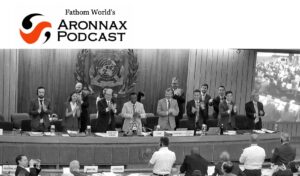

Aronnax: July 3rd
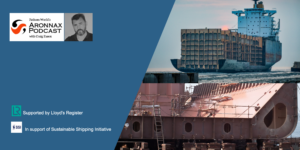
Aronnax: June 29th – Ships and their steel: Turning it green

Aronnax: June 19th

Aronnax: June 4th
























